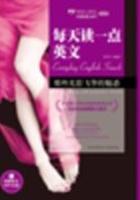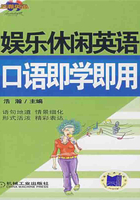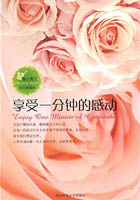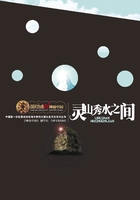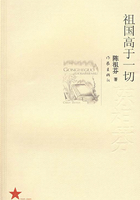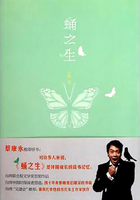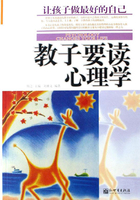I continued in this way to move from tomb to tomb, and from chapel to chapel. The day was gradually wearing away; the distant tread of loiterers about the abbey grew less and less frequent; the sweet-tongued bell was summoning to evening prayers; and I saw at a distance the choristers, in their white surplices, crossing the aisle and entering the choir. I stood before the entrance to Henry the Seventh’ s chapel. A flight of steps lead up to it, through a deep and gloomy, but magnificent arch. Great gates of brass, richly and delicately wrought, turn heavily upon their hinges, as if proudly reluctant to admit the feet of common mortals into this most gorgeous of sepulchres.
On entering, the eye is astonished by the pomp of architecture, and the elaborate beauty of sculptured detail. The very walls are wrought into universal ornament, incrusted with tracery, and scooped into niches, crowded with the statutes of saints and martyrs. Stone seems, by the cunning labor of the chisel, to have been robbed of its weight and density, suspended aloft, as if by magic, and the fretted roof achieved with the wonderful minuteness and airy security of a cobweb.
Along the sides of the chapel are the lofty stalls of the Knights of the Bath, richly carved of oak, though with the grotesque decorations of Gothic architecture. On the pinnacles of the stalls are affixed the helmets and crests of the knights, with their scarfs and swords; and above them are suspended their banners, emblazoned with armorial bearings, and contrasting the splendor of gold and purple and crimson with the cold gray fretwork of the roof. In the midst of this grand mausoleum stands the sepulchre of its founder, — his effigy, with that of his queen, extended on a sumptuous tomb, and the whole surrounded by a superbly wrought brazen railing.
There is a sad dreariness in this magnificence: this strange mixture of tombs and trophies; these emblems of living and aspiring ambition, close beside mementos which show the dust and oblivion in which all must sooner or later terminate. Nothing impresses the mind with a deeper feeling of loneliness than to tread the silent and deserted scene of former throng and pageant. On looking round on the vacant stalls of the knights and their esquires, and on the rows of dusty but gorgeous banners that were once borne before them, my imagination conjured up the scene when this hall was bright with the valor and beauty of the land; glittering with the splendor of jeweled rank and military array; alive with the tread of many feet and the hum of an admiring multitude. All had passed away; the silence of death had settled again upon the which had found their way into the chapel, and built their nests among its friezes and pendants — sure sign of solitariness and desertion.
When I read the names inscribed on the banners, they were those of men scattered far and wide about the world; some tossing upon distant seas; some under arms in distant lands; same mingling in the busy intrigues of courts and cabinets; all seeking to deserve one more distinction in this mansion of shadowy honors: the melancholy reward of a monument.
Two small aisles on each side of this chapel present a touching instance of the equality of the graves; which brings down the oppressor to a level with the oppressed, and mingles the dust of the bitterest enemies together. In one is the sepulchre of the haughty Elizabeth; in the other is that of her victim, the lovely and unfortunate Mary. Not an hour in the day but some ejaculation of pity is uttered over the fate of the latter, mingled with indignation at her oppressor. The walls of Elizabeth’ s sepulchre continually echo with the sighs of sympathy heaved at the grave of her rival.
A peculiar melancholy reigns over the aisle where Mary lies buried. The light struggles dimly through windows darkened by dust. The greater part of the place is in deep shadow, and the walls are stained and tinted by time and weather. A marble figure of Mary is stretched upon the tomb, round which is an iron railing, much corroded, bearing her national emblem — the thistle. I was weary with wandering, and sat down to rest myself by the monument, revolving in my mind the checked and disastrous story of poor Mary.
The sound of casual footsteps had ceased from the abbey. I could only hear, now and then, the distant voice of the priest repeating the evening service, and the faint responses of the choir, these paused for a time, and all was hushed. The stillness, the desertion and obscurity that were gradually prevailing around, gave a deeper and more solemn interest to the place.
For in the silent grave no conversation,
No joyful tread of friends, no voice of lovers,
No careful father’ s counsel — nothing’ s heard,
For nothing is, but all oblivion,
Dust and an endless darkness.
正值深秋时节,这时的天气让人感觉冷清而忧郁,早晨的阴影几乎和傍晚的相接,这更给岁末衰落的气氛笼罩了一层灰蒙蒙的色彩。就是在这样的一天,我一个人在威斯敏斯特教堂走了几个小时。在这古老的建筑群中,有一种凄凉的感觉与这个季节的色调刚好吻合。我跨进门槛,似乎一脚迈进了古老的年代,将自己融入久远之前的夜色中。


